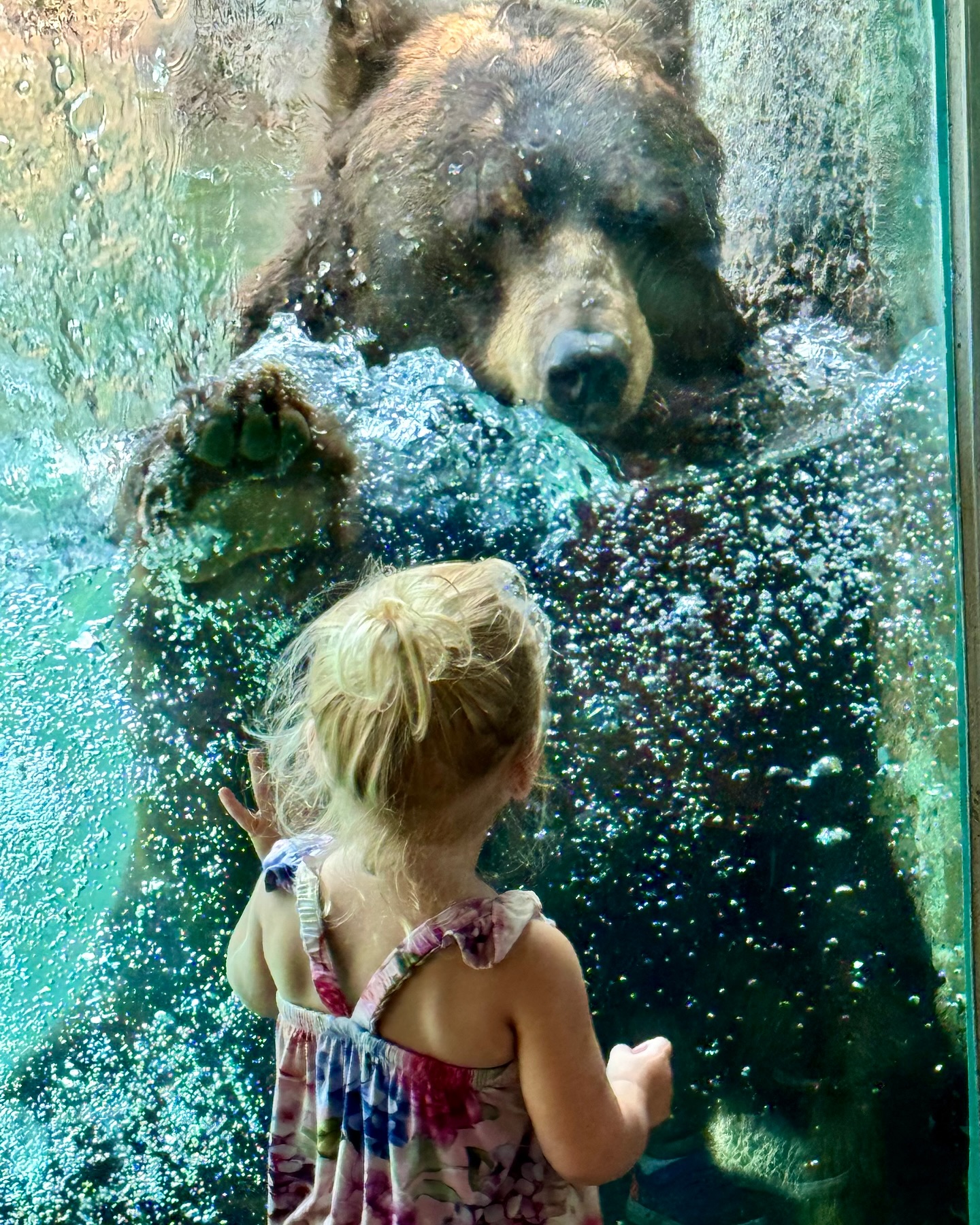- Significance of black bear conservation efforts and their role in ecosystems.
- Zoo management’s role in educational outreach and community engagement.
- The impact of frequent visitation and bonding experiences between zoo animals and regular visitors.
- The importance of capturing and sharing wildlife moments through photography.
- Contributions of community members to wildlife conservation advocacy.
Our final feature to wrap up Black Bear Friday in August presents a heartwarming visual—the sweet picture of Murphy and Mela. The story behind this picture offers a beautiful nexus of wildlife conservation, zoological education, community bonding, and the critical role zoos play in fostering these elements.
Beginning with the essence of black bear conservation, it’s imperative to understand that these creatures are more than just fascinating animals. American black bears (Ursus americanus), native to North America, are integral components of their ecosystems. They act as seed dispersers and their scrounging helps aerate soil. However, rising human encroachment and habitat fragmentation escalating their endangered status, necessitates focused conservation efforts. Institutions like zoos are at the forefront of such initiatives, contributing extensively to both ex-situ (off-site) and in-situ (on-site) conservation practices.
Zoos worldwide are increasingly vital as conservatories for wildlife. Modern zoo management encompasses a spectrum of tasks from caring for animals to educational outreach and scientific research. Today’s zoos operate based on a paradigm of promoting animal welfare while educating the public about wildlife conservation. These institutions use exhibits to reflect natural habitats, thereby ensuring animals thrive. Regular health checkups, calibrated nutrition plans, psychological enrichments, and large, interactive enclosures are standard practices for good zoo management.
Moreover, zoos emphasize the educational role by organizing programs aimed at different audiences. Interactive exhibits, guided tours, and workshops are designed to enlighten the public. Murals, plaques, and digital displays adjacent to animal enclosures provide information about species, their habitat, and conservation status. Such was the case with Murphy, a black bear whose story has captivated numerous visitors. Murphy’s enclosure serves as an educational platform explaining the black bear’s role in the ecosystem and the importance of preserving their natural habitats.
In this narrative, Mela and her father’s relationship with Murphy emphasizes the positive impact regular zoo visits can have. Regular visitors often develop a special connection with the animals they repeatedly see. This bond can influence public attitudes towards wildlife, cultivating a sense of responsibility and advocacy for conservation efforts. Children, in particular, signal influential agents for change. Mela’s enthusiasm for weekly zoo visits with her father Zach showcases how personal experiences can be instrumental in fostering a long-term commitment to animal welfare and environmental protection.
Photography plays an equally important role in contemporary wildlife conservation practices. In the digital age, visuals can reach and influence a vast audience, igniting interest and empathy towards animals worldwide. The enchanting photograph of Murphy and Mela captures a moment of serenity and highlights the joy and warmth that wildlife interaction can bring. Such images not only enhance public interest but also serve crucially in education and fundraising campaigns. Teachers, researchers, and conservationists utilize powerful images to tell compelling stories that drive conservation initiatives.
A noteworthy aspect of this narrative is the contribution by community members like Maggie and Zach Progin, who provided the lovely picture of Murphy and their daughter Mela. Fueled by their enthusiasm, this picture brings a personal touch to the often technical and impersonal domain of wildlife conservation. Community involvement is pivotal in amplifying conservation messages. These contributions extend beyond mere participation. They encompass advocacy, financial support, and voluntary services, making community members essential allies in the global conservation mission.
Collaborative efforts between zoo management, visitors, and the broader community bolster conservation messages and propel actions. As more people feel connected to animals like Murphy through intimate moments, they are likelier to support conservation measures and advocate for sustainable practices. The cumulative effect of individual actions can lead to significant advancements in wildlife protection and habitat preservation.
Murphy and Mela’s story encapsulates the essence of zoo-based conservation—a balanced approach integrating animal welfare, education, community engagement, and visual storytelling to foster a community-driven effort towards wildlife protection. By appreciating the multifaceted functions of zoos and understanding the importance of black bears in ecosystems, individuals can contribute significantly to conservation efforts, ensuring that the memories created today translate into a secure future for wildlife.
*****
Source Description
To conclude our black bear Friday Features for the month of August, we bring you this sweet picture of Murphy and Mela. 🐻 💦
Mela and her father come to the zoo weekly to visit all the animals! Thank you to Maggie and Zach Progin for this perfect photo of Murphy with their daughter!


